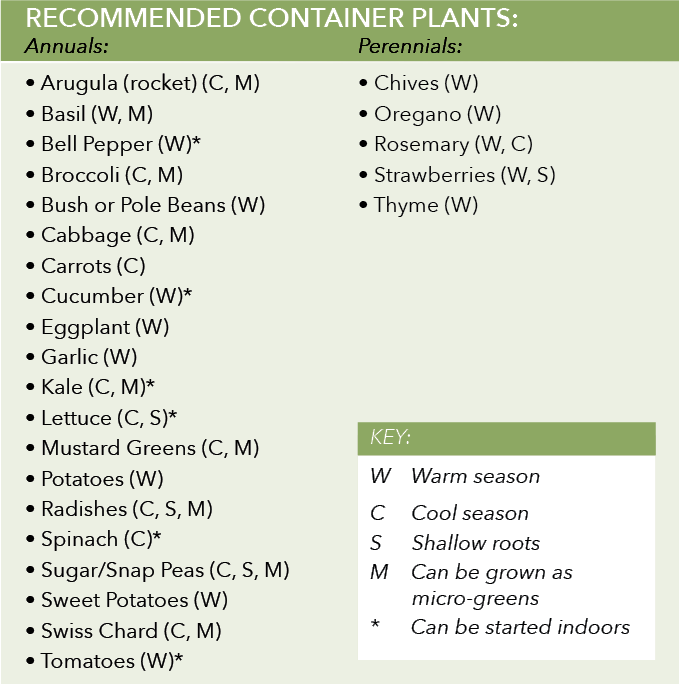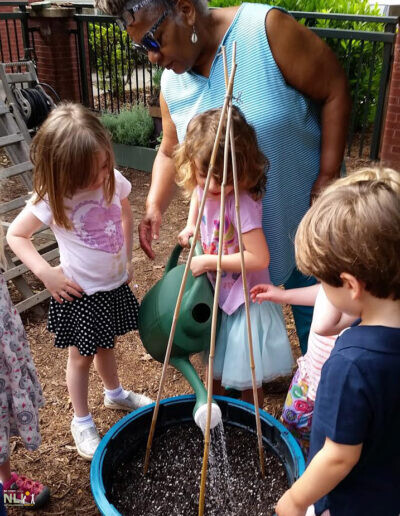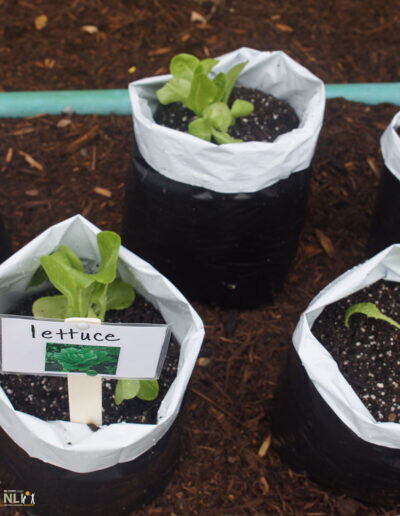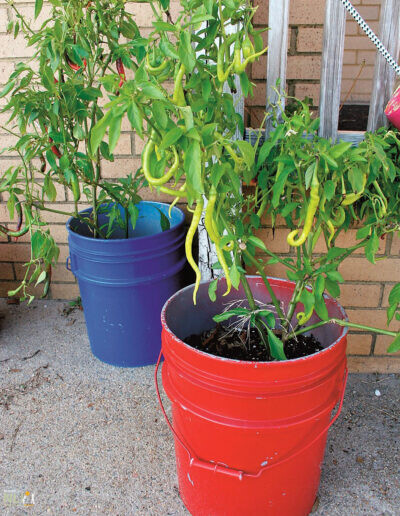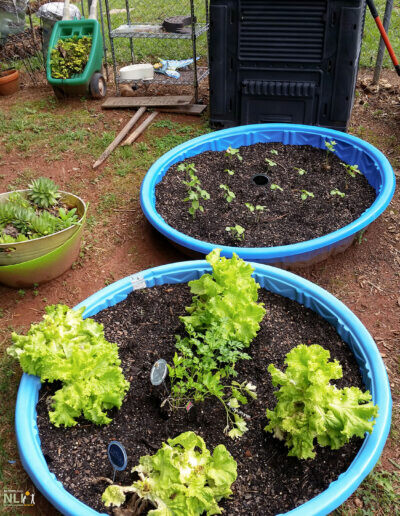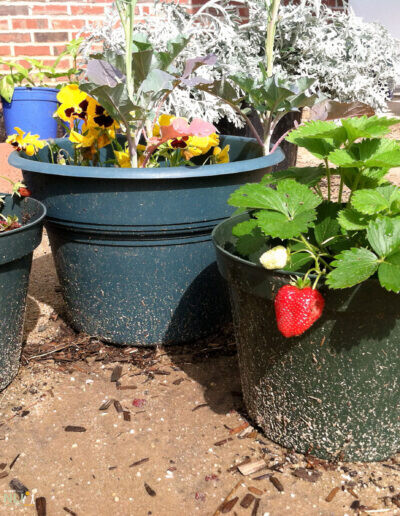Infosheets
10. Growing Edibles in Containers
Container gardening is a practical, low-cost, space-efficient, and child-friendly approach to growing fresh produce at home, schools, and in childcare centers. Children delight in growing and eating their own food. Research shows that repeated experience with healthy food options increases the likelihood of learning healthy eating habits. Using containers can be a permanent, flexible gardening strategy or a short-term first step towards a larger scale installation. Either way, containers are great for growing tasty herbs, delicious salad lettuce, succulent strawberries, and much more (see listing, p.2). Success depends on six key considerations.
- Container selection
Edible plants can be grown in purchased, repurposed, or recycled containers, as long as they meet two basic requirements: enough space for fully mature plants and adequate drainage (holes drilled in container bottom). Recycled or purchased 5-gallon paint pails (10” dia.) are a sturdy, inexpensive, temporary or permanent choice. Handles make them easy to carry around. Repurposed dishpans/tubs, children’s wagons and splash pools, canvas bags, and even boots or shoes can work. Store-bought “grow bags” are another inexpensive choice. Available in different sizes, they are foldable and easily stored when not in use. Engage children in decorating containers to encourage ownership. - Suitable edible plants
Many annual edibles and some perennial edibles can be grown in containers, guided by USDA hardiness zone constraints (see 4, below). Plants can be grown directly from seed or as transplants (see companion InfoSheets: Making Newspaper Seedling Pots and Starting Veggies Indoors. Plants that spread, such as melons and pumpkins, are not recommended. For plants that climb, such as peas, beans, and cucumbers, provide vertical support using stakes, cages, trellises, or adjacent fences to grow on. Plants with similar needs can share the same container if large enough. Many annual edibles make tasty micro-greens (see ‘M’ listing, p.2). - High-quality growing medium
Usually called “potting mix,” a high-quality growing medium is critical to ensure that plants thrive in containers. Purchase in 2-cu.ft. bags from local garden supply stores. Using exclusively native soils in containers is not recommended. They are usually less absorbent, compacted, and less likely to provide enough nutrients to sustain vigorous plant growth. - Correct growing conditions
The USDA Plant Hardiness Zone Map is a key guide. In Zone 7 and higher (Most of North Carolina), both warm and cool-season edibles can be grown in containers. For warm-season edibles, plant after the last frost-free date. For cool-season edibles, plant about four weeks before the last frost-free date. Extensive winter gardening tips (Zones 3-12) are listed in a Mother Earth News survey of backyard gardeners. Apply liquid fertilizer every 3-4 weeks to ensure robust growth. Water frequently. Different plants need specific water, light, and nutrient conditions to thrive. For North Carolina, refer to NC Extension Gardener Handbook/18. In other zones, check local cooperative extension resources. - Health and safety
Although recycled tire planters work well for flowering, ornamental plants, do not use for edibles as toxins may leach into the soil and be absorbed by plants. Do not use harvested rainwater to water edibles. Use only potable water. - Container sizes
Larger container diameters (10” recommended minimum), will reduce watering requirements and provide sufficient area for several plants. Depth is not so critical. Dish/pan containers will still be deep enough for shallow-rooted plants (‘S’ below). To clarify pot sizes, see Pot Sizes Decoded. Diameters 10”-18” (5-gallon and larger) can be bulk-purchased inexpensively.
Resources
- NC Extension Gardener Handbook. Ch.18, Plants Grown in Containers
- NLI/NC State Extension – LOCAL FOODS Childcare Center Gardening Series
- Kids Container Gardening. Cindy Krezel. 2nd. Ed. Ball Publishing, 2010.
- The Bountiful Container. Rose Marie Nichols McGee & Maggie Stuckey. Workman, 2002.

